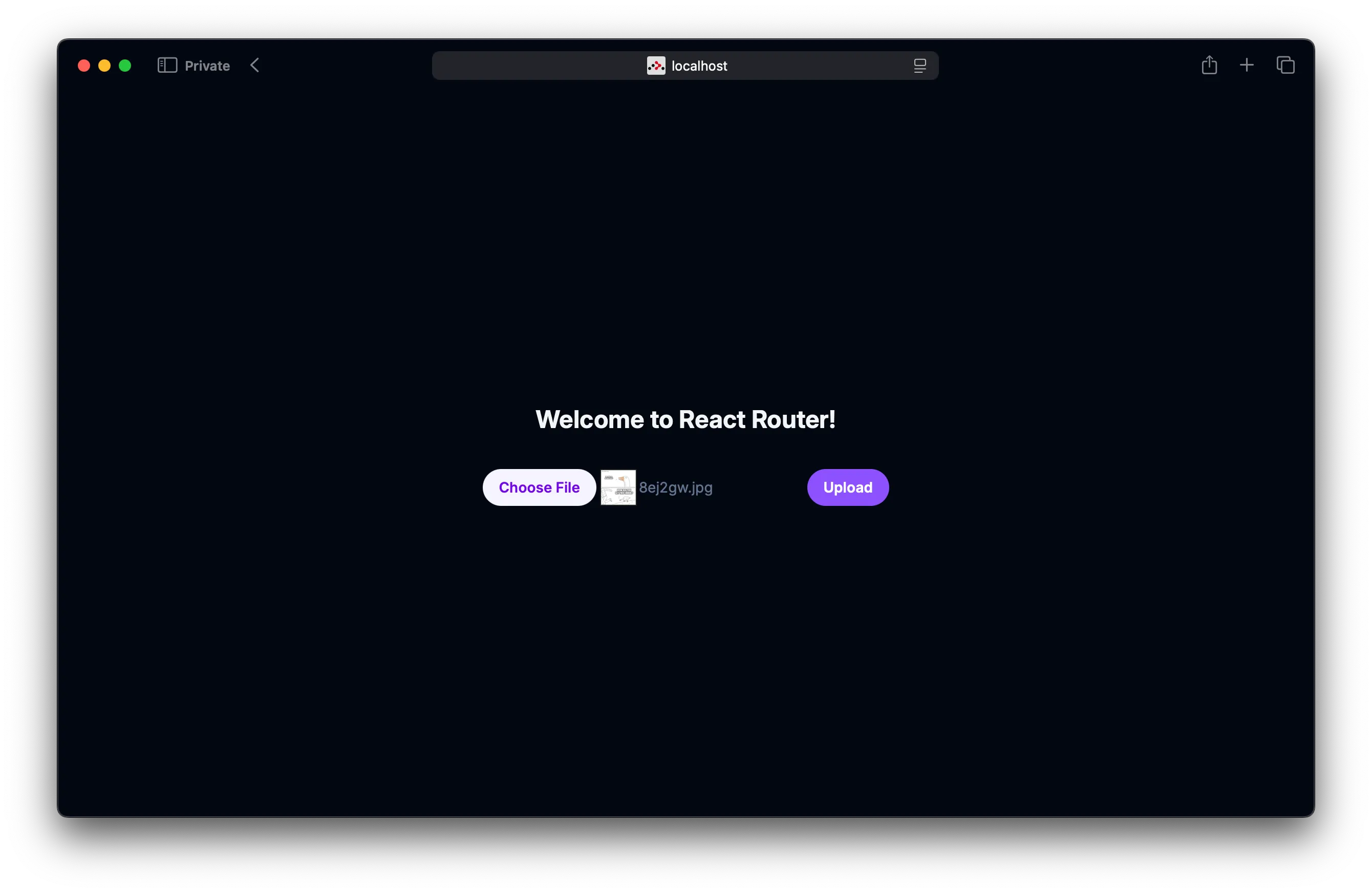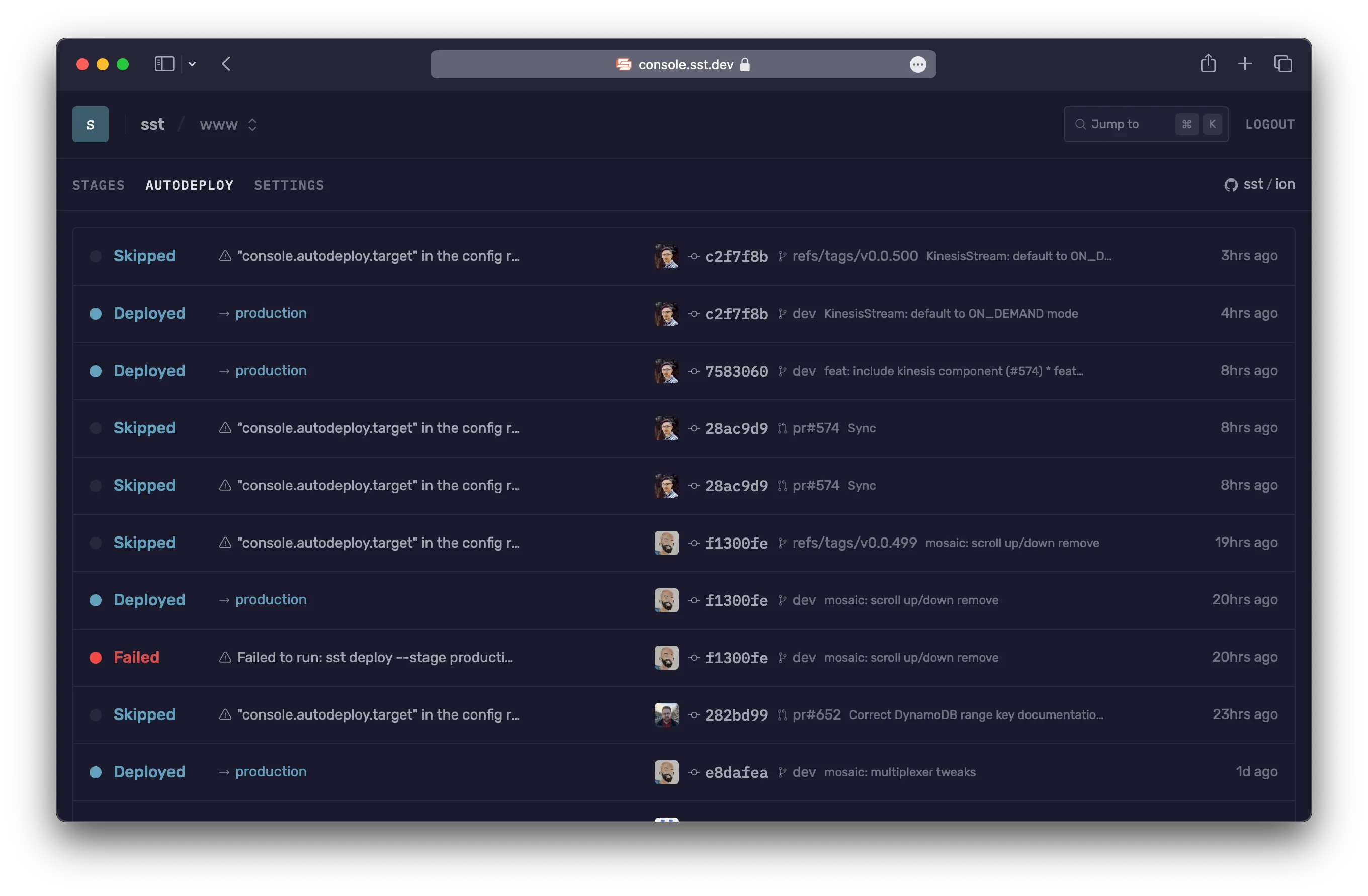React Router on AWS with SST
We are going to create a React Router v7 app in Framework mode, add an S3 Bucket for file uploads, and deploy it to using the React component.
Before you get started, make sure to configure your AWS credentials.
1. Create a project
Let’s start by creating our project.
npx create-react-router@latest aws-react-routercd aws-react-routerWe are picking all the default options.
Init SST
Now let’s initialize SST in our app.
npx sst@latest initnpm installSelect the defaults and pick AWS. This’ll create a sst.config.ts file in your project root.
async run() { new sst.aws.React("MyWeb");}Start dev mode
Run the following to start dev mode. This’ll start SST and your React Router app.
npx sst devOnce complete, click on MyWeb in the sidebar and open your React Router app in your browser.
2. Add an S3 Bucket
Let’s allow public access to our S3 Bucket for file uploads. Update your sst.config.ts.
const bucket = new sst.aws.Bucket("MyBucket", { access: "public"});Add this above the React component.
Link the bucket
Now, link the bucket to our React Router app.
new sst.aws.React("MyWeb", { link: [bucket],});3. Create an upload form
Add the upload form client in app/routes/home.tsx. Replace the Home component with:
export default function Home({ loaderData,}: Route.ComponentProps) { const { url } = loaderData; return ( <div className="flex h-screen items-center justify-center"> <div className="flex flex-col items-center gap-8"> <h1 className="leading text-2xl font-bold text-gray-800 dark:text-gray-100"> Welcome to React Router! </h1> <form className="flex flex-row gap-4" onSubmit={async (e) => { e.preventDefault();
const file = (e.target as HTMLFormElement).file.files?.[0]!;
const image = await fetch(url, { body: file, method: "PUT", headers: { "Content-Type": file.type, "Content-Disposition": `attachment; filename="${file.name}"`, }, });
window.location.href = image.url.split("?")[0]; }} > <input name="file" type="file" accept="image/png, image/jpeg" className="block w-full text-sm text-slate-500 file:mr-4 file:py-2 file:px-4 file:rounded-full file:border-0 file:text-sm file:font-semibold file:bg-violet-50 file:text-violet-700 hover:file:bg-violet-100" /> <button className="bg-violet-500 hover:bg-violet-700 text-white text-sm font-semibold py-2 px-4 rounded-full"> Upload </button> </form> </div> </div> );}4. Generate a pre-signed URL
When our app loads, we’ll generate a pre-signed URL for the file upload and use it in the form.
Add this above the Home component in app/routes/home.tsx.
export async function loader() { const command = new PutObjectCommand({ Key: crypto.randomUUID(), Bucket: Resource.MyBucket.name, }); const url = await getSignedUrl(new S3Client({}), command);
return { url };}Add the relevant imports.
import { Resource } from "sst";import { getSignedUrl } from "@aws-sdk/s3-request-presigner";import { S3Client, PutObjectCommand } from "@aws-sdk/client-s3";And install the npm packages.
npm install @aws-sdk/client-s3 @aws-sdk/s3-request-presignerHead over to the local React Router app in your browser, http://localhost:5173 and try uploading an image. You should see it upload and then download the image.

5. Deploy your app
Now let’s deploy your app to AWS.
npx sst deploy --stage productionYou can use any stage name here but it’s good to create a new stage for production.
Congrats! Your site should now be live!
Connect the console
As a next step, you can setup the SST Console to git push to deploy your app and view logs from it.

You can create a free account and connect it to your AWS account.